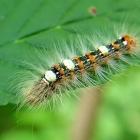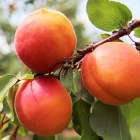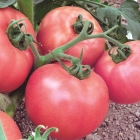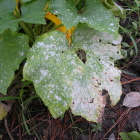 Often everything crawls around the leaves or is rooted in roots, thoughtlessly destroyed. But in the huge world of insects and worms there are creatures very useful. Having created comfortable conditions for them, it is possible to reduce the use of chemistry.
Often everything crawls around the leaves or is rooted in roots, thoughtlessly destroyed. But in the huge world of insects and worms there are creatures very useful. Having created comfortable conditions for them, it is possible to reduce the use of chemistry.
My neighbor ruthlessly struggles with God's cows! And today he read on the same forum that the woman of rainwrites took to pests! I want to remind our readers about biological methods to combat harmful Insects, and about our friends and assistants.
Many pests exterminate birds, frogs and toads. Jersies destroy not only pests, but also mice. Mole is not only digging holes than sometimes harms our plants, but also eats slugs, pupa of fires, larvae of the May beetle and other pests. But if you have no pest data on the plot, or there are very few of them, then the presence of the Crow on the site leads to the death of the crop, so it is more logical get rid of the crot.
And spiders feed on insects, many pests die on their networks. Worms are loosened to the ground, recycle plant residues in humus. Of course, in the flower pot they are not a place, with hunger and the roots of colors will be there. The ants are also conditionally our assistants: they destroy the caterpillars of many insects, but bind to the TRU. Food with sweet discharges, tickling them with their mustache.
Now about unconditional assistants. Ladybugs you know. They differ in large fertility, their larvae of violet color with yellowish dots on the sides. Both larvae and adult insects eat tool, shields and false shields. Adult beetle per day destroys 40-50 pcs., And the larva for the period of its development - 600-800 pcs.
Sometimes, moving a lump of soil, you can see the beetle of the oblong shape of a dark color with a metal tide, which is very quickly running away. This is a bugger who hides in the afternoon. These beetles and their larvae feed on small caterpillars, slugs, snails, larvae of weevils and other pests.
Now about pest parasites. They lay eggs in the bodies of harmful insects. The larvae donated from these eggs feed on the owner's tissues, and he dies. These are riders - scaffolding and trichograms. They are even diluted in large quantities in the biologicors, they are sent to industrial gardens and implement lovers to lovers.
I collided myself. 15 years ago, for the first time, peppers and eggplants were planted in the film greenhouses. Plants developed very well, have already started blossoming, as suddenly began to turn yellow and the flowers began to be down. It turned out, they completely littered tool. I went to the laboratory near Petersburg, where I acquired ladybugs and their larvae, brought them in a match box and released them in different places of the greenhouse. Literally a week later, my plants began to come to life. True, harvest is that year i never got, as they have become fruiting very late, we did not have time to mature.
We must protect our assistants, and not fight them.
G. L. Maslyanitskaya













Larvae Zlatnozki - just a wolf for aphids, a real voracious predator. Adult winged insects are active at dusk and at night. Feed on floral pollen. Putting a fragrant tobacco, you can attract them to your garden.
What is meager?
They are also called sheetoblocks. Adult bugs 2-3 mm long, youth first green. When it grows up, it becomes brownish and reminds the appearance of Cycadku-Pennica, only smaller. Wings folds just like her. The larvae when leaving the eggs - like flat layers, move little, but the plants harm strongly. Like the wave, the droplets of the sweet fluid, which the people were nicknamed by a medical dew, hence the name - Mestery. Sticky allocations not only contaminate the leaves, dust sticks to them, and because the plants through the leaves breathe. Punched leaves are fused and fall.
Fighting: During the degeneration of the larvae (end of spring), we spray the plant with a 0.3% carbofos emulsion, in July, to make landing 0.2-0.3% solution of trichloromethos.
And even oddly enough, in the fight against the median and tool, detergents for dishes help well. Divide them with water in the ratio of 1:20 and spray your landings. It is necessary to do it in dry weak weather, in the morning or evening. And most carefully, so that the lower sides of the leaves were moistened with a solution. After a week, repeat the processing.
Please tell me how to deal with cabbage?
First of all, in front of the summer on the Claop, you need to use scapors: sprinkle a naphthalene plant, mixed with sand or ash (1: 5). You can sprinkle with a cavilin-powdered lime (20: 1), tobacco (1: 1), all this is mixed with earth or sand. You can block the branches with leaves, moisten with a caily or kerosene, set fire and stick around the bed around. Claps fly on the smell of cruciferous plants. You can moisten a white paper with cabbage juice and spend the fence. Claps will fly on paper. So you can save plants.
How to get rid of the Wireman? Just no strength! No funds help !!!
Faina, do not upset you so. Everything is very fixable. I will tell you how 95% got rid of this enemy. I successfully use this method for 12 years.
So, when planting potatoes into each well, put, except ash and humus, several pine needles or christmas trees. This is salvation. The trees are thrown after the new year, and I collect the needles in the package and bring home. Strank them before landing. The more needles, the better.